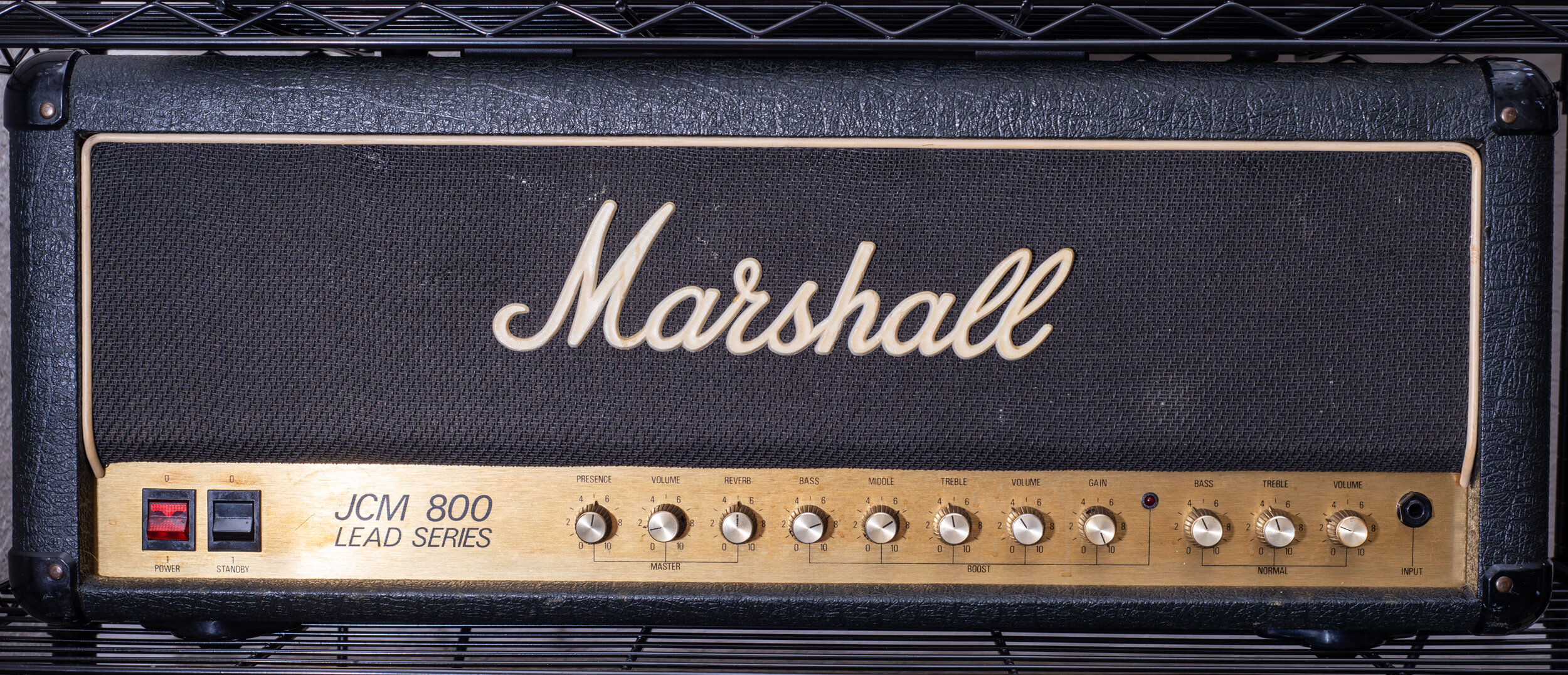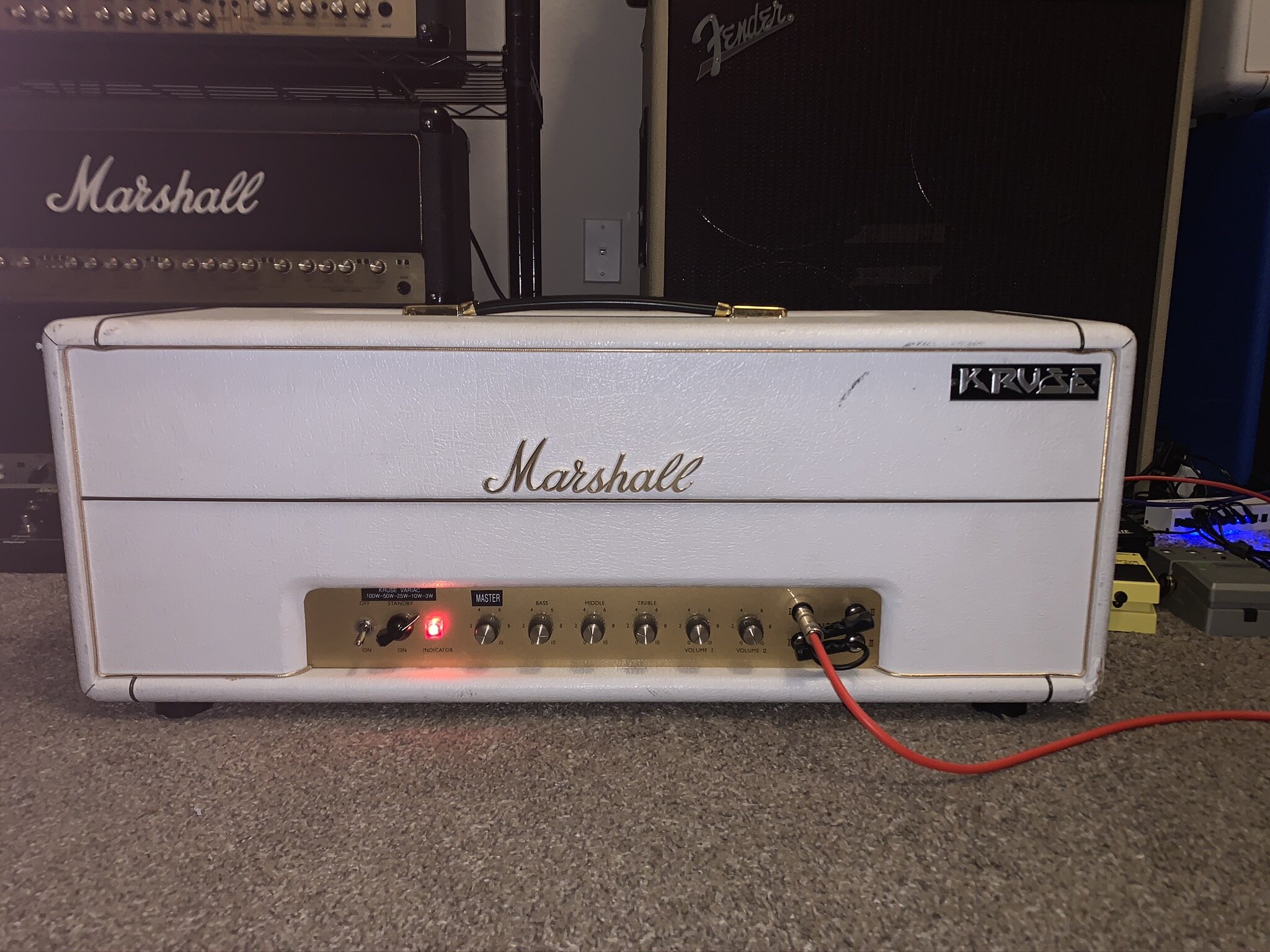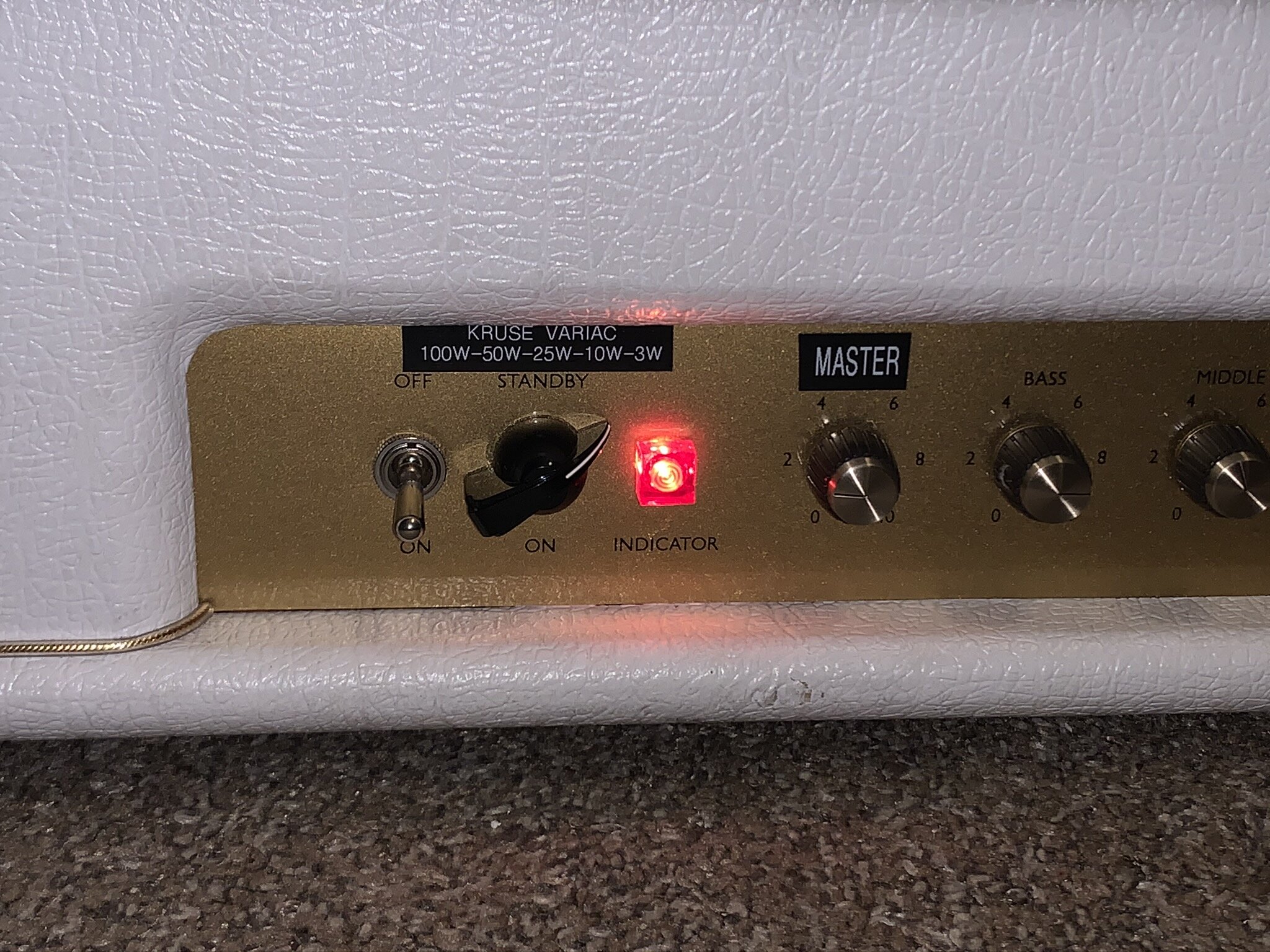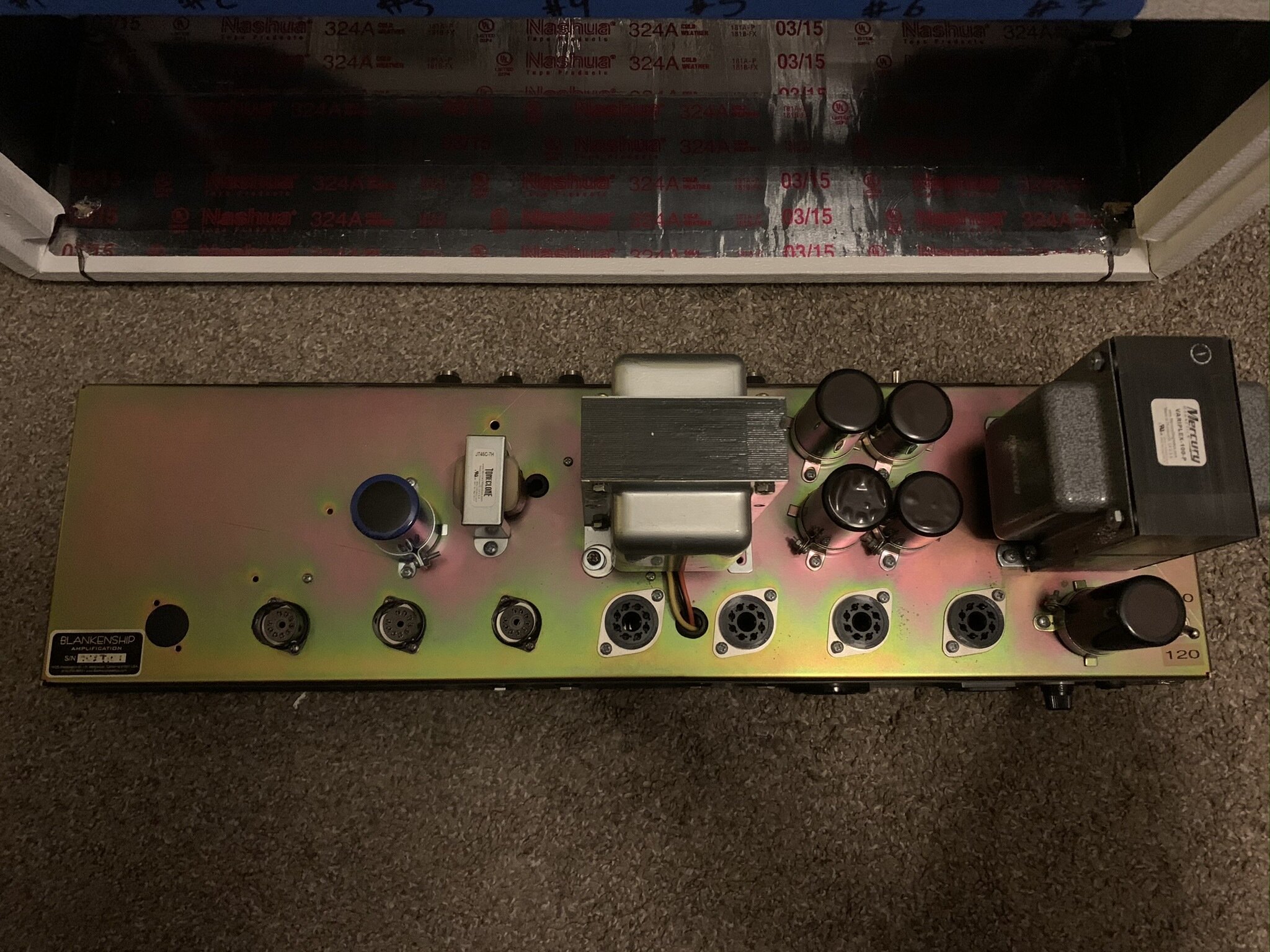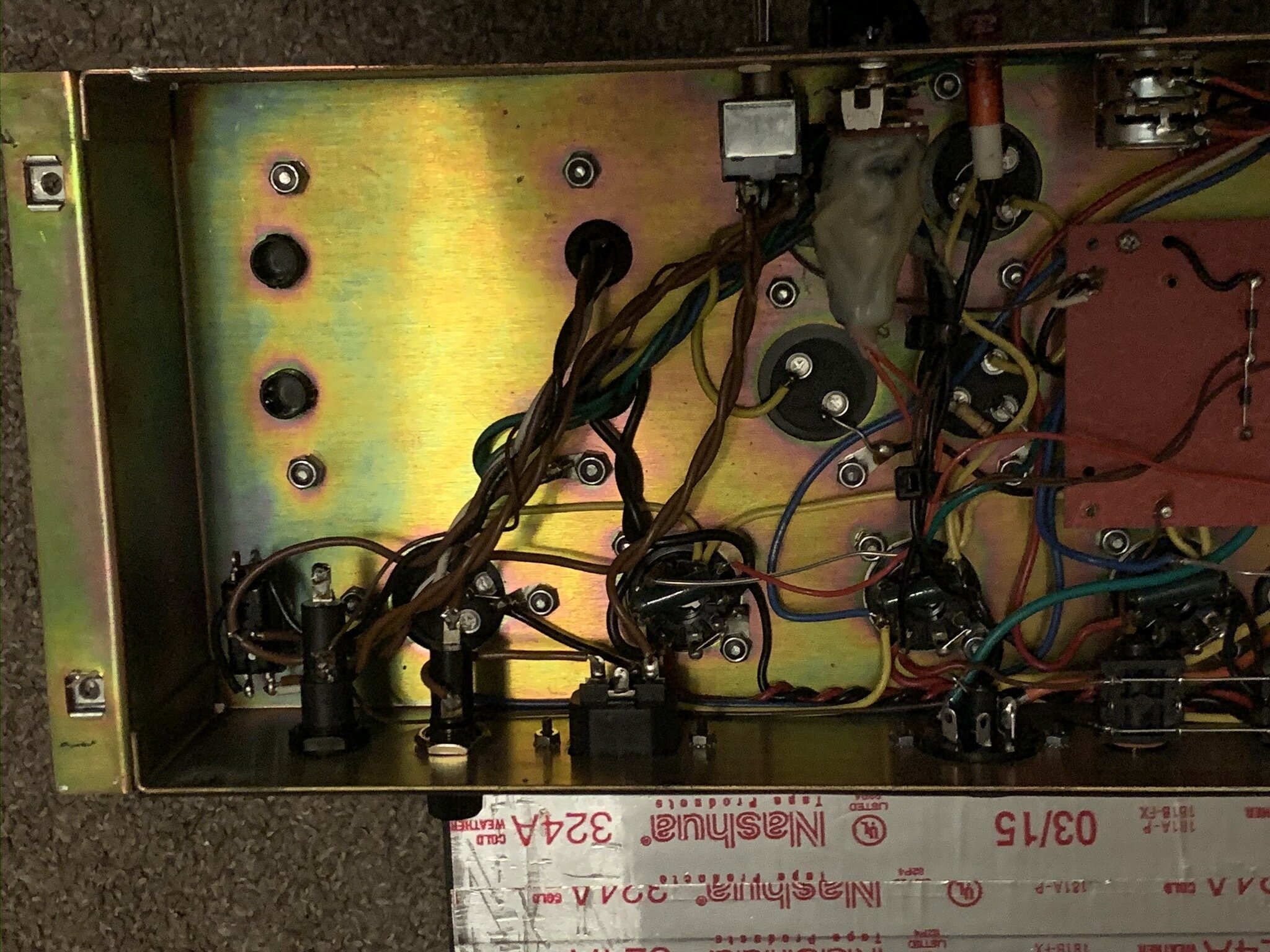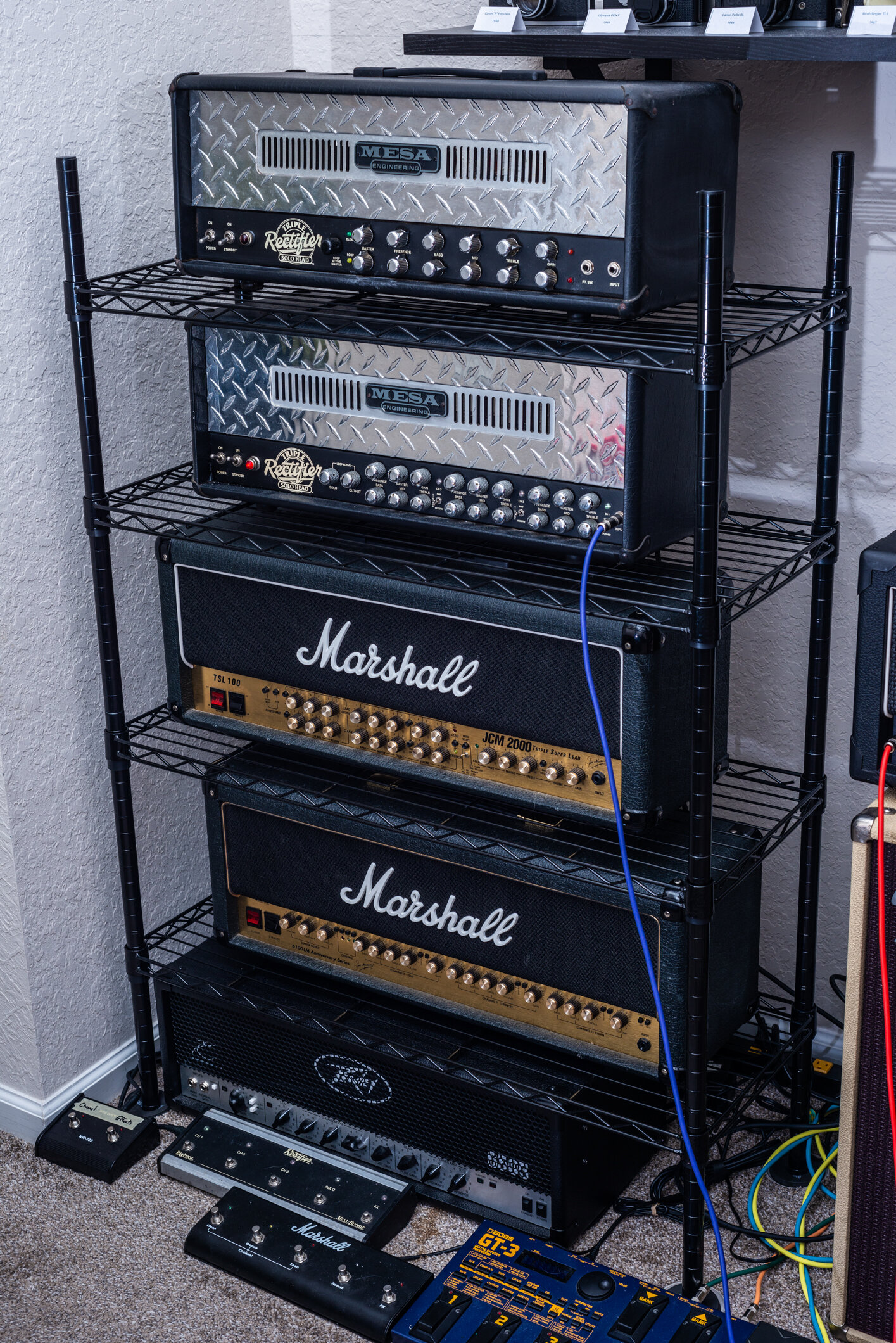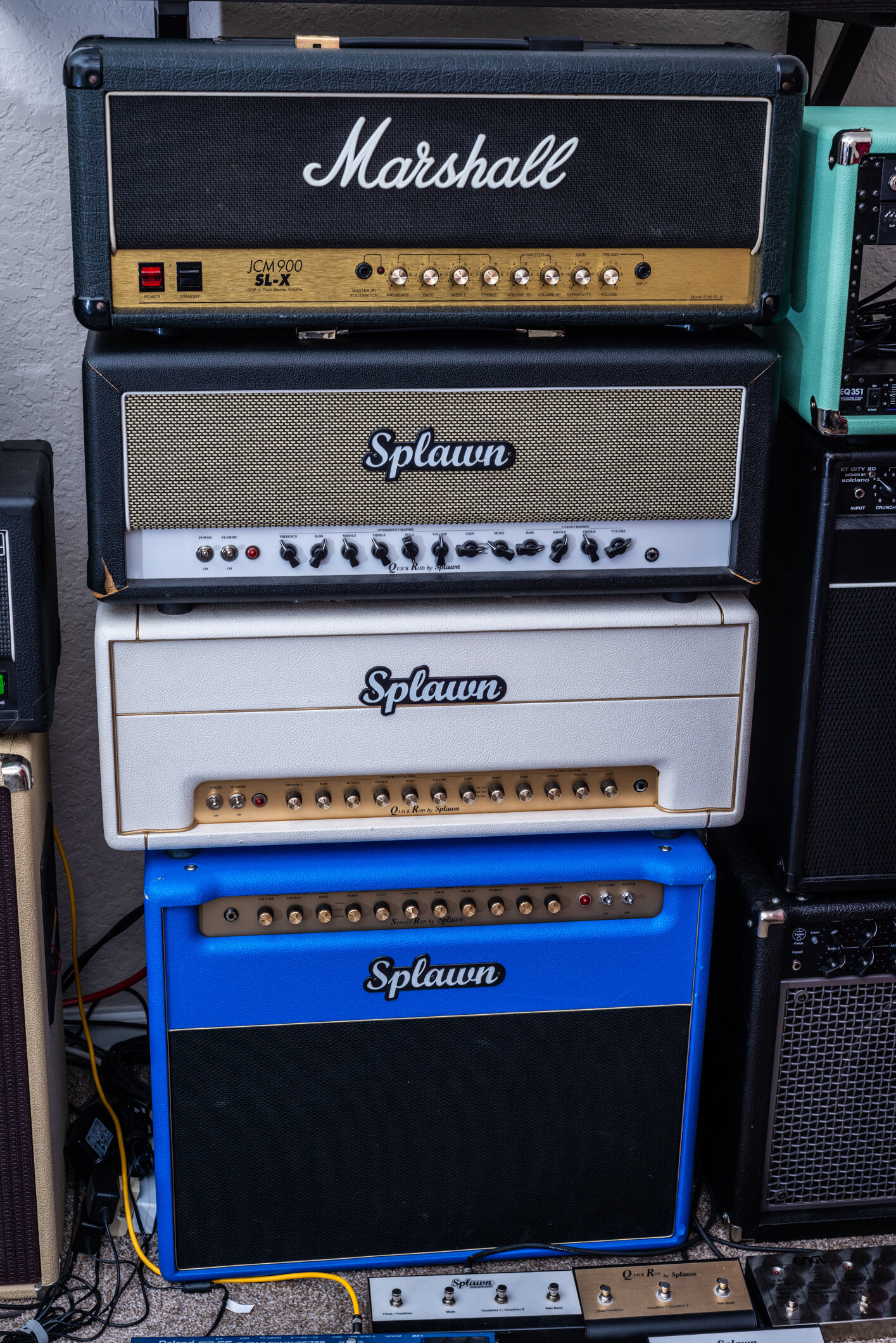Wow! I spotted this one online at GC, and it had no picture - but it was described as a Model 3DR “Rainbow Crackle.” I figured for the price, I’d risk the purchase and find out what kind of condition it was since I can always return it if I don’t like it.
Luckily, there’s no danger of that, this is a fantastic guitar. It’s not a 3DR, it’s a Model 4, but that is fine with me. In fact, I might prefer that because I’m a big fan of the shark tooth inlay necks and the HSS pickup config is so useful across a variety of styles. This came with the factory J50BC and J200 pickups, the JE-1200 mid boost circuit, and JT-6 trem - just like my other two Model 4’s - but in the interest of a change of pace, I’ve already swapped out the J50BC with a zebra Dimarzio Super Distortion. This pickup previously lived in my Charvel Fusion, but has been unused for a while since I sold that guitar months ago.
I think this pickup might have too strong of a midrange to really cooperate with the JE-1200 mid boost, but that’s ok. Since the mid boost is not that clearly different sounding in the bridge position, it means I can set it however I like for the neck and middle single coils and not worry about how the sound will change when I need to use the bridge position.
The real highlight here is the finish of course, otherwise it’s just a standard and great sounding Model 4. The finish is a transition from blue to red to yellow crackle, and there is a little bit of a fade in between them. There are some purple and orange hues visible in thinner stripes between the colors, but it’s not as clear as the primary colors.
This is my first crackle job Charvel, and I’m also surprised to see it has a very slight texture visible through the top finish when looking at it under the light or at a shallow angle. Overall this is one of the coolest finishes on any guitar I own, and I think the very tight pattern looks great. Looking around the web, I’ve seen other crackle jobs that are a bit more spread out with more black in between the colors, I think those look really cool too and I’d love to have both variations someday.


